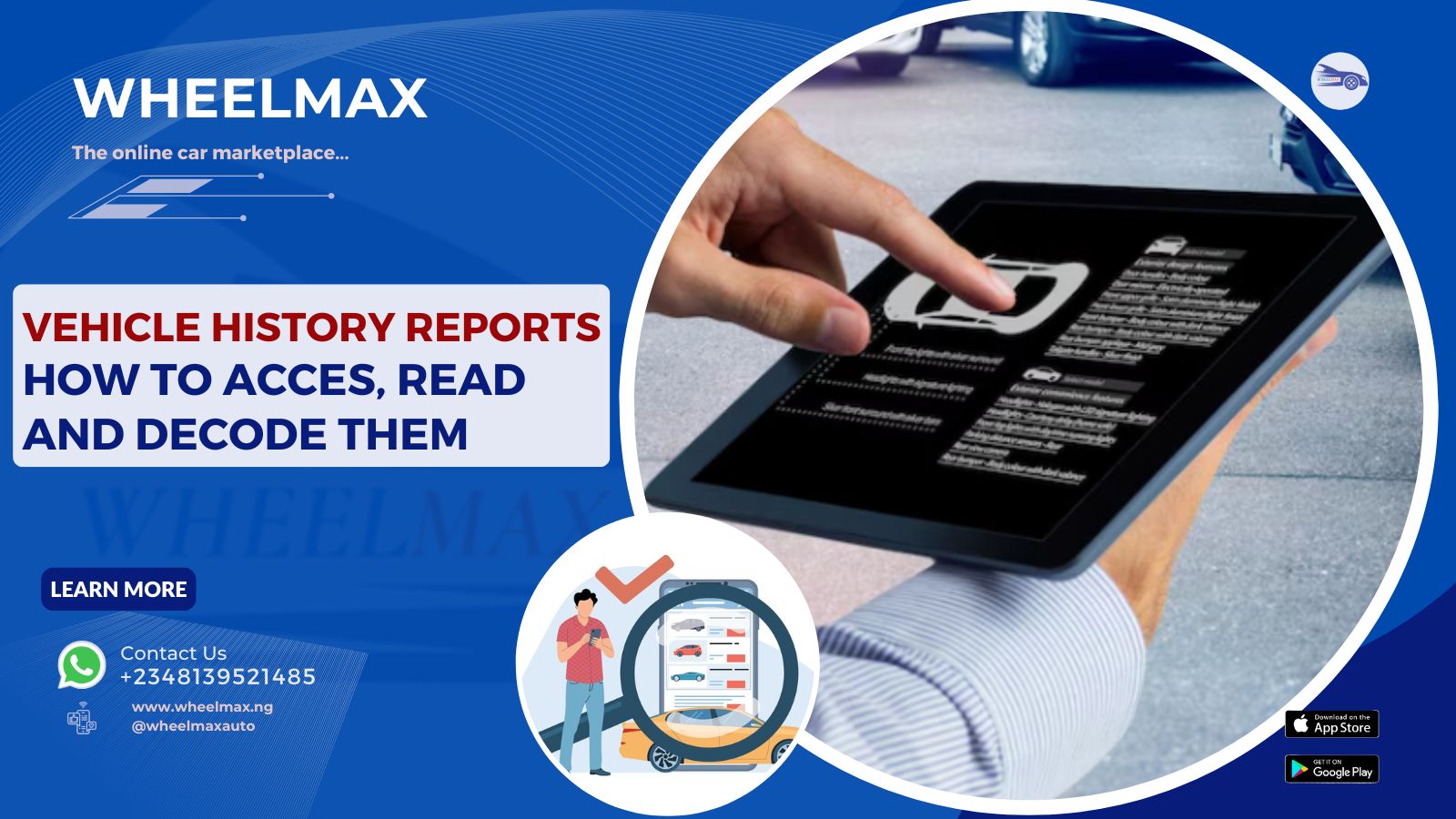Understanding Vehicle History Reports: What They Reveal & How to Access Them
You’ve found it. The perfect used car. The paint gleams under the sun, the interior is spotless, and the price feels just right. It’s an exciting moment, but it’s often followed by a nagging, quiet voice in the back of your mind: “What am I not seeing?”
Buying a used car can feel like a high-stakes gamble. You’re trusting that the seller is telling you the whole story. But what if they aren’t? What if that shiny exterior is hiding a history of serious accidents, flood damage, or fraudulent mileage? A small oversight here isn’t just an inconvenience; it can lead to a financial nightmare of endless repairs and a vehicle that’s fundamentally unsafe.
But what if you could eliminate the guesswork? What if you had a tool that could act like an x-ray, revealing the car’s entire history—the good, the bad, and the ugly?
That tool exists. It's called a Vehicle History Report (VHR), and for any smart buyer, it's non-negotiable. This article will show you exactly what secrets a VHR unlocks and how you can get one, turning you from a hopeful gambler into an informed expert.
The Secret Weapon: What a Vehicle History Report Actually Reveals
Think of a VHR as a car’s official biography. It’s a detailed timeline compiled from thousands of sources—insurance companies, repair shops, government agencies, and more. It’s not an opinion; it’s a collection of facts. When you run a VHR, you’re not just checking a box; you’re unlocking critical intelligence.
Here’s the game-changing information you’ll find:
1. Accident History: This is the big one. The report will show if the vehicle has been in a reported accident, the severity of the damage, and in some cases, where the impact occurred. A minor fender bender is one thing; a major collision that could compromise the frame's integrity is a deal-breaker.
2. Title Status and Damage Reports: This section flashes the biggest red flags. A VHR will reveal if the car has ever been issued a “branded title,” such as:
- Salvage: Declared a total loss by an insurance company.
- Flood: Damaged by water, leading to potential electrical and mould nightmares.
- Rebuilt: A salvage vehicle that has been repaired and passed inspection. It can be a risky purchase.
3. Ownership History: How many people have owned this car? Was it a one-owner personal vehicle or a hard-driven commercial fleet car? This context tells you a lot about the potential wear and tear.
4. Odometer Readings: Odometer fraud (or “mileage rollback”) is a common scam to make a car seem less used than it is. A VHR records mileage at different points in time (like during inspections or service). If you see a reading from 2022 that’s higher than the current one, you’ve caught a major problem.
5. Service and Maintenance Records: While not always complete, many reports include a log of maintenance events from reporting service centres. A car with a consistent service history is a clear sign of a responsible previous owner.
How to Access This Critical Data in 2 Simple Steps
Getting a VHR is surprisingly easy and is the single best investment you can make before buying a used car.
Step 1: Locate the VIN (Vehicle Identification Number)
The VIN is a unique 17-character code that is the key to unlocking the car's history. You can find it in several places:
- On the driver's side dashboard, visible through the windshield.
- On the sticker inside the driver’s side door jamb.
- On the vehicle’s registration and insurance documents.
Step 2: Use a Reputable VHR Provider
Once you have the VIN, you can use a number of well-known online services. Providers like CarFax, AutoCheck, and others offer comprehensive international reports. You simply visit their website, enter the VIN, and pay a small fee. Within minutes, you’ll have a full report delivered to your email.
From Guesswork to Confidence: The Final Word
A shiny coat of paint can hide a multitude of sins. Without a Vehicle History Report, you are buying blind. With it, you hold all the cards. You gain the power to walk away from a bad deal with confidence and the leverage to negotiate a fair price on a good one.
It transforms the entire process from one of fear and uncertainty into one of clarity and control.
At Wheelmax, we believe in a transparent and trustworthy automotive marketplace. It starts with making an informed purchase, and it continues with maintaining that vehicle with parts you can trust.
Explore our listings and ensure your great find stays a great car.
